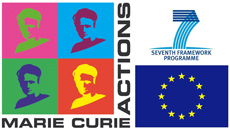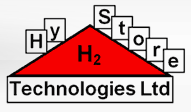Atmospheric Research
A. Present activities & status
EREL is developing state-of-the-art software for:
- Prognostic - diagnostic meteorology and data assimilation
- Environmental Computational Fluid Dynamics:
- Atmospheric turbulent flows in complex terrains (local- to meso-scale)
- Atmospheric turbulence modelling
- Large Eddy Simulation
- Atmospheric dispersion of inert, radioactive, light or dense gases in small/medium/large scale for assessment of atmospheric pollution from power plants and chemical industries (normal operation and accidents) and environmental impact studies
- Development and operation of Decision Support Systems in case of Nuclear Accidents
EREL is currently developing a high resolution (1 x 1 km2) regional air quality forecasting system focusing on the region of Attica. The system is comprised by the MM5 meteorological model, the in-house emission processing system EMISLAB and community model for air quality, CMAQ. The developed system is currently under validation and will be made available to the public via a dedicated website. In support of the described activities, the members of EREL are currently preparing an upgrading of the existing emission inventory containing all the accounted emission sources in the region, could be used for decision support studies to assess the impact of the main sectors on the air pollution of the region.
EREL has an important contribution in the National Nuclear Emergency Management Plan by being responsible to produce and provide the competent authority (Greek Atomic Energy Commission) with predictions for atmospheric dispersion and deposition of radio-nuclides, in cases of international exercises or real emergencies. EREL calculates these prognoses using its in-house developed computational models for atmospheric dispersion.
EREL is also active in the field of Analysis/Estimation of the Indoor and Outdoor Air Pollution Levels and provides customer-driven scientific and technical support for Laboratory Measurements of Air Quality. The general aim of air pollutants measurements is the examination of air quality in urban areas, in buildings of different use (residents, offices, public buildings, schools, hospitals, museums etc) and the risk assessment for sensitive groups of populations. Currently, the Laboratory is able to offer the following research services:
- Measurements of chemical compounds in indoor and outdoor air such as:
- Total and selected volatile organic compounds (VOCs),
- Carbonyl and Sulphur compounds
- Particulate matter (TSP, PM10, PM2.5, PM1)
- Particle counts up to very high concentrations (particles/litre)
- Dust mass distribution in different size ranges in order to relate the results with health symptoms of the people living or working in a building
- Chemical analysis of suspended particles for PAHs
- Inorganic compounds (NOx, SO2, O3)
- Building ventilation measurements
- Te/RH Indoor and outdoor air profile
Furthermore, EREL is involved, in collaboration with JRC (No CCR.IHCP.C.431003), in experimental work dealing with measurements of the antipollution properties (heterogenous photocatalysis) of materials containing TiO2.
B. Research Vision and Associated Actions in atlas
B.1 Atmospheric Modelling
EREL aims to develop an integrated management system (Figure 4) that promotes integrated environmental management, risk reduction, sustainable development and healthier environments. The impact assessment will not only be limited to the so called priority pollutants, particulate matter, ground-level ozone, sulphur dioxide, nitrogen oxides and carbon monoxide, but will be expanded to the new generation of pollutants, PAHs, toxic chemicals and heavy metals. Within the proposed activities it is planned to expand modelling capabilities of existing modelling systems for identifying and quantifying the adverse impact of pollution from multiple stressors whilst at the same time evaluating the effectiveness of control and prevention measures (such as transport activities, specific industries and SMEs, residential, fugitive particulates).
[Figure 4]
A key priority is the development and application a General Circulation Model (e.g. GISS), placing particular emphasis on the investigation of climate sensitivity, including the climate system's response to such forcings as solar variability, anthropogenic and natural emissions of greenhouse gases and aerosols, etc. The GCM model output for selected scenarios will be downscaled using a regional climate model (e.g. WRF, MM5), thus producing inputs to a chemical transport model (e.g. CMAQ).
Also intense modelling activities are planned to nest urban scale models (e.g. ADREA-HF) to regional model, to provide subgrid information on the emissions and flow characteristics on hotspots. Thus, the developed system will have provisions for integrating multi-scale modelling activities ranging from global models to regional and urban scale and the modelling of hotspots.
EREL plans the implementation of data assimilation procedures in its Air-Quality Web-based forecasting system described above. Assimilation of both meteorological and air quality data is envisaged from the currently existing monitoring network in the Greater Athens Area. The network is managed by the Hellenic National Meteorological Service and the Ministry of Environment. EREL operates also a monitoring station in the area of NCSR “Demokritos”.
Another key priority of EREL is to increase its potential and efficiency in providing the Greek Atomic Energy Commission with predictions for atmospheric dispersion and deposition of radio-nuclides, in cases of international exercises or real emergencies, in the frame of its role in the National Nuclear Emergency Management Plan. The in-house developed computational models used by EREL for this purpose are currently run on single-processor computers, and this poses limitations on computational times and accuracy of the results. EREL envisages to expand and run the atmospheric dispersion codes on parallel computational environment, thus decreasing substantially the computational times and increasing the accuracy and reliability of the predictions. The activities proposed in the current project will give this opportunity, and will greatly benefit the decision making process in the frame of the Nuclear Emergency Management plan.
Major milestones in the atmospheric modelling direction include:
- Compile a high resolution emission inventory for Attica
- Setup an operational weather – air pollution forecasting system for Attica
- Expand and upgrade the atmospheric dispersion modelling system used in the National Nuclear Emergency Management plan for parallel computing environment
- Data Assimilation methods in diagnostic meteorology and atmospheric dispersion modelling
- Set up and calibrate a General Circulation Model focusing in the Western Mediterranean
- Develop a risk assessment and health impact framework and integrate it into the operational air pollution forecasting system
B.2 Air quality monitoring
In terms of air pollution measurements and analysis, the future R&D objectives of EREL (to be served by the present proposal) include:
- Increase the range of air pollutants measured in ambient air and industrial chimneys (heavy metals, isokinetic sampling)
- Artificial ageing treatmentsof artifacts in climatic chamber under various environmental conditions
- Improve analytical techniques for the estimation of the photocatalytic properties of TiO2 containing materials on air pollutants
- Chemical analysis and characterization of fine and ultra-fine particles
The underlying principle in all the above items, is for EREL to develop and apply new techniques and methods for estimating the origin, the attitude and the effect of air pollutants in order to suggest solutions for the public health protection.
Major milestones in the atmospheric monitoring direction include:
- Perform source apportionment studies of indoor and outdoor pollution
- Estimation of the impact of photocatalytic technology in real scale
- Integrated measurement approaches of urban air quality and industrial emissions, integrated in the IEIA System
C. Outreaching Activities
Outreaching activities are important to help access knowledge and expertise existing elsewhere in the ERA and worldwide, actively participating in the R&D efforts on major global issues, such as environmental challenges and climate change. More specifically they include:
- Active participation in international networks and collaborations with expert groups, such as : ARC SYSTEM RESEARCH GMBH (Austria) in the area of risk assessment, Imperial College London (IC, UK) for radiative forcing, Technical University of Madrid (UPM, ES) for the coupling of regional to local models, University of Northern Carolina (UNC, US) for regional chemical transport models.
- Two-way secondments, staff and samples between EREL and the above organisations
- EREL also aims to be part of the Global Monitoring for Environment and Security (GMES), and the European Shared Information System initiative for exchanging a wide range of useful information on environmental matters.
- Active participation in CEN/TC 264/ WG15 “Reference gravimetric measurements method for the determination of PM2.5 mass fraction of suspended particulate matter and ambient air”
- Increase participation in model intercomparison studies, concerning both regional and local scale models, under European initiatives that are currently implemented, e.g. COST actions, or will be initiated in the future.
The website with the real time forecasting of weather and air pollution in the region of Attica will be a main tool for increasing the visibility of the R&D activities performed, whilst at the same time disseminate EREL capabilities to the wider public. In a latter stage the website will be enhanced to contain data from the monitoring equipment currently operating in the premises of NCSR Demokritos. Also on a later stage, an open call will be issued to organizations in possession of environmental data, either in real time or not, to integrate them into the EREL website.




